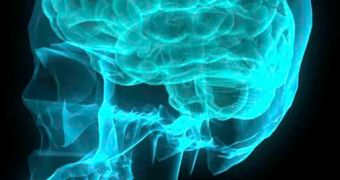MIT scientists managed to fully map the interactions that occur between two pacemakers in the brain, which help humans breathe constantly and regularly. The parafacial respiratory group (pFRG) and the pre-Botzinger complex (preBotC) regions of the brain work together to ensure that a person doesn't suffocate, basically. These areas could also have something to do with the crib "death" phenomena, as well as play a role in central sleep apnea.
Apparently, the two pacemakers do not always work together, but rather exchange roles as age progresses. The pFRG is thought to have a dominant role during infancy and childhood, after which time it triggers preBotC, which later takes control during the adult life. However, lead researcher Chi-Sang Poon, of the Harvard-MIT Division of Health Sciences and Technology (HST), created a model that reconciles fragmented opinions.
In his "handshake model," the scientist says that both regions work together even just after birth, but that their dominance shifts over time. And although preBotC becomes crucial during adult life, it still cannot function without pFRG. Also, if preBotC is not triggered in time, then the other region cannot sustain regulate respiratory functions all by itself.
"The two-pacemaker system provides robustness and redundancy that protects us against a number of challenges from childhood to adulthood," Poon explained.
The only time the balance shifts is during respiratory distress or when there is a lack of oxygen in the air. Then, both regions become active and try to make up for the deficiency. The preBotC still leads the way, but pFRG is much more active and the two pacemakers complement each other perfectly, by repeated stimulation and inhibition.
"This is a beautiful example of a yin-yang relationship. You want to be stable so you can have harmony," Poon said. Though this connection may seem a bit complex, it provides humans with a flawless breathing control center that can operate without a hitch under normal conditions. If something goes wrong in one section, the other jumps to the rescue and saves the day. And, admittedly, your lives.

 14 DAY TRIAL //
14 DAY TRIAL //